During the ashura ceremony, the Shiites mythically refer to the exemplary self-sacrifice of the third Imam Husayn by inserting him in the cosmological context of the cosmic war, of Madzeist derivation, among the principles of good against evil; then a continuous union between the political and religious spheres, the boundaries between the two are becoming more and more confused, and the religious dimension justifies the political sentiment, while the local sentiment leads to a global drama.
di Gabriel Grieco
all photos are the property of the author
During my stay in Iran I was lucky enough to attend the ritual of ashura, central to Shiite Islamism on the one hand for its evocation of a common past founder, on the other hand, to legitimize a political present which in turn is thus permeated by the symbolic dimension that belongs to the sphere of the "sacred". This has led me to reflect on the nature of the representation of / in the ashura ritual and I have tried to give an interpretation that makes evident the line of continuity between the past and the present, as well as between the sacred and the profane (political). In this sense, the ashura ritual is confirmed not only as a founding myth of a particular religion, but also as a ritual and a symbol of power, perfectly framed in the contemporary political dimension. One could almost say a "political drama" which represents an event from the past reshaping itself in the wake of a legitimately constructed present with a strong symbolic character.
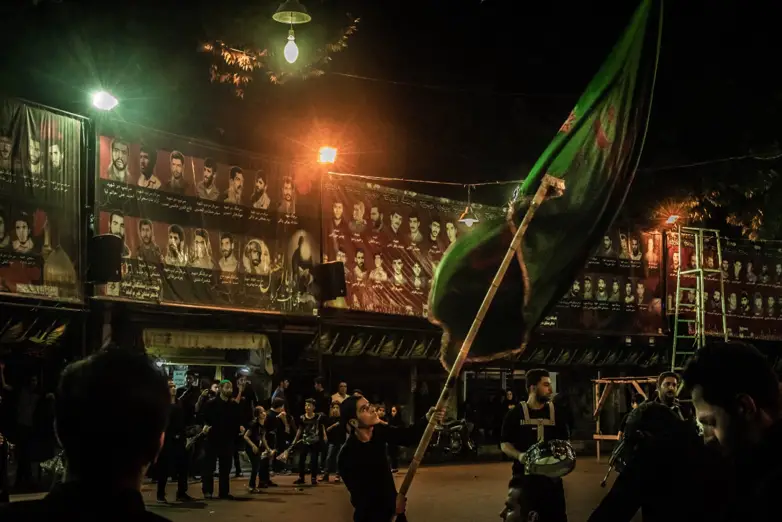
Sunnis and Shiites
After the Prophet's Death Muhammad in 632 AD, Abu Bakr, father of a wife of Muhammad, was proclaimed first caliph without first having consulted Alì, cousin and son-in-law of the same prophet, who would be the natural heir. However the latter, Fr.n not to spread dissent in the community, he also decided to consent to the new political order until he himself took office after the assassination of the third caliph, which took place in 656 AD Alì remained in office until 661 and is today recognized by the Shiites as the first caliph. But this internal conflict, cultural before political, between the two currents would have been destined to emerge in an ever more violent way, up to a definitive break that assumes, especially for the Shiite wing, born under the influence of the marked Mazdean dualism, almost apocalyptic tinges of a clash between Good and Evil.
This confrontation will culminate in "Great discord", that is to say in the definitive fragmentation between Shiites and Sunnis that took place in 680 AD, date of the note battle of Karbala, in present-day Iraq. There, the third Shiite imam husayn, along with seventy-two other companions, he lost his life and was beheaded by the commander of the Umayyad army. This sacrifice was made voluntarily, with the intent of winning the hearts of the faithful with his own blood and of reconstituting and renewing the community. The sacrifice of the imam, a historical fact, is then inserted in the Shiite "mythology" where the same character becomes hero who gave his life for the survival of religion and community (martyr, in fact).
In today's Shia world, and in the Iranian one in particular, the commemoration of mourning renews society every year and is included in the ritual of ashura. We meet for ten days in which the sacred gesture is re-actualized and ritualized through the theatricalization of pain which unites the whole community that not only pays homage, but identifies itself with the pain of the martyr through the repetition of gestures and the dramatization of the event thus implementing a de-historicization, or a conversion of profane time that thanks to the ritual is inserted into a sacred time - sacralization of public space and archetypal repetition in which the data is relived in the historical contingency.
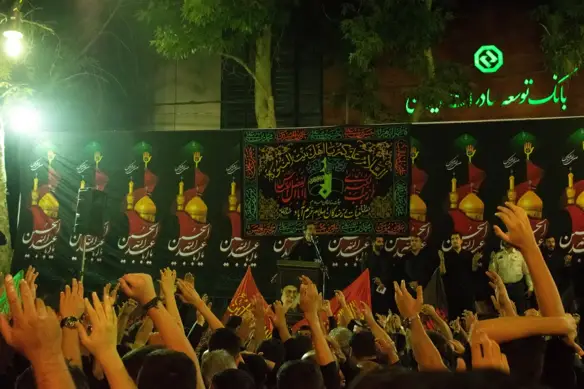
The ritual of ashura
The country that more than all the others has brought together the Shiite community under a single flag is certainly Iran and for this reason it is known as the main landmark of the Shiite bloc.
The re-enactment of the sacrifice of Mohammed's nephew takes place every year in tenth day of Muharram, the first month of the Islamic lunar calendar. The religious community relives the suffering of Husayn for a few days with public theatrical performances, songs, prayers, processions with imposing flags, tears and self-flagellations. Everyone participates in it, and the majority of the people wear a black robe to commemorate mourning. The last two days of the ceremony are called Tasu'a and Ashura respectively. During the day of the ashura people march in the street united in suffering, become one with their martyr, cry, they beat their breasts as a sign of pain and symbolically flagellate themselves with chains (zanjjir) specially built to recall the gesture, generally without inflicting physical damage, but with exceptions; this is the case in India, in particular in Mumbai, where the faithful of the Shiite community cross the streets, whipping and torturing their backs in a bloody and pathos-filled procession.
- address, iron structures of various sizes, accompany the processions and are carried in turn by the participants of the group: those who want, in fact, can wear support suits to try to cushion the weight of the structure that will be loaded on their shoulders. These heavy structures evoke the weight of suffering; they are rich in details that recall battle or religious symbols, such as swords and feathers. Carrying the alamat is a source of pride for the participants in the procession and anyone can carry it to demonstrate their strength and their ability to identify with suffering.
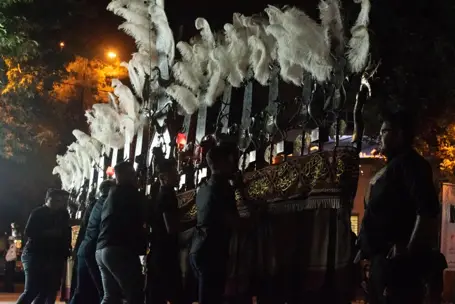
Every city, as well as every country, stands out in staging the drama through sometimes very different rules. In some places, such as a Khorramabad - capital of Lorestan, a region bordering Iraq - a particularly fascinating ritual is carried out: on the day of Tasu'a, women march silently, without shoes, cross mosques and light candles from house to house to remember the prophet's niece; on the day of the ashura, however, starting from the first light, the faithful gather in some squares of the city, immerse themselves in tanks full of mud built for the occasion and after drying the mud they march until noon as a sign of mourning .
It is important in this regard to remember that the sprinkle with mud during funeral ceremonies it was a custom already active among the nomads of Lorestan. The mourning ceremony (pigs in the local dialect) involved a public space in which nearby visitors came to share suffering as a sign of respect. They covered their shoulders in mud and carried a small black rag torn from their tent. This custom is used in other parts of contemporary Iran, albeit rarely and in much milder ways. Some aspects and objects of the nomadic culture of Lorestan are reconstructed and preserved in the anthropology museum of Khorramabad inside the Falak-ol-aflak castle, a palace dating back to the Sassanid era.
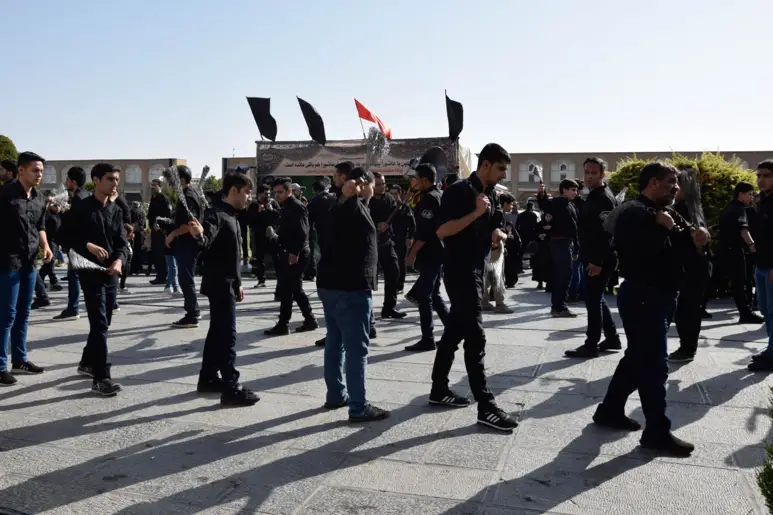
The theater is also part of the ritual complex; the community participates in the drama following the same pattern as the processions: beatings on the chest, tears, screams. The theatrical representation stages the suffering of the imam and reminds us that it not only invites the participation of the drama but above all it brings to the stage the eternal struggle between good and evil. The representative codes of the two parts are well contrasted: on the one hand the voices of the "righteous", sweet, wise, quiet, sing from pardoned bodies, dressed in the colors of Islam; on the other side coarse bodies, violent voices and red colors, a symbol of blood and ruthlessness. Once again we can see this incessant dichotomy that does not cease to be present and permeate Iranian society which makes it the model of its own vision of the world and ultimately characterizes even its political life. But this pattern has even deeper roots and recalls a cultural heritage particularly rooted in Iranian social life which saw its birth in the pre-Islamic era.
We must not forget that before Shiite Islam, Persia was the cradle of what is called the first monotheistic religion: Zoroastrianism, or Mazdeism. The prophet of this ancient and little known religion was Zoroaster / Zarathustra. The texts that have come down to us refer to a doctrine based on dualism whose foundation is a moral attitude, as the philosopher writes Nietzsche: "Zarathustra is the first in history to have seen in the struggle of good and evil the true wheel in the gear of things»(Michael Stausberg; 2013). And it is precisely this cosmogonic legacy, perhaps, that partly explains what Iranian national sentiment is today, whose constitution is derived from this dichotomous scheme declined in historical and political as well as religious terms.
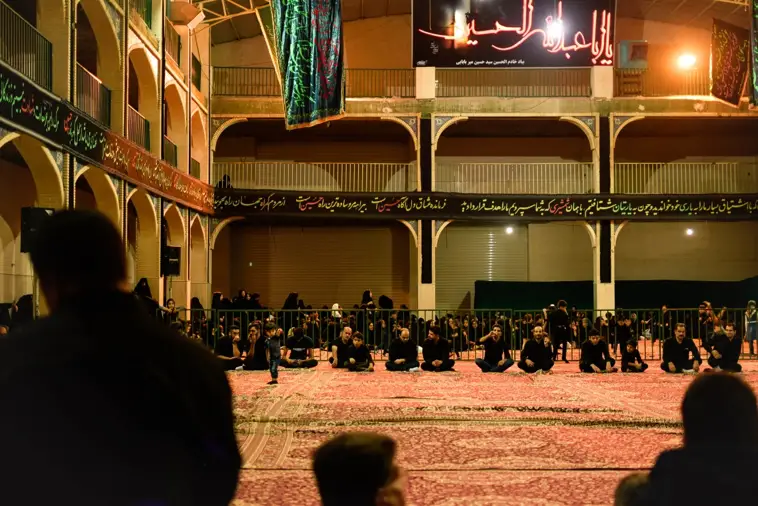
Between politics and religion
The Shiite religious clergy was born during the Safavid dynasty in the sixteenth century, where Shiism was declared the state religion as a response to conflicting demands that saw the Ottoman Sunni dynasty oppose the religious policy of the Persian shah Isam'il. Starting from this era, Shiism experienced a progressive and unstoppable rationalization and politicization. In 1979 the Iranian revolution unified the community under the same political creed. The collective mourning reproduced in the ashura ritual transfers one's religious sentiment into the political sphere. So it was in the revolution, a movement of unifying solidarity that invests the political sphere on the basis of the dichotomous scheme that the Shiite world has known in its founding myth and which has reproduced itself in a religious community that even before the clash with the Islam had known this model. The community manages to elevate its religious passion by sweeping away what was considered an oppressive, unbelieving and pro-Western regime: the regime of the reza shah Palahvi.
Contemporary social agents transfigure the fight against evil into a global plan. The American state, imperialism, capitalism, are in fact the new targets that take on diabolical characters. It is worth dwelling on the rhetoric used by Imam Khomeini to organize the revolt and to distinguish his own foreign policy. In fact the new ayatollah defined the United States the "Great Satan", and during his public interventions he never failed to remember it. The United States itself is the agents behind the military supply given to Iraq in the war against Iran, which lasted eight years, after causing approximately one million deaths.

Even today, during the ashura, the faces of the people who died in that war are portrayed on the posters posted in all Iranian cities. They are remembered as martyrs, heroes of a battle of the "righteous" against Iraqi Sunni elites and the complicity of American allies. The faces of those soldiers come together in the ritual religious language and in the collective elaboration of mourning, entering the symbolic universe of Shiism. They watch over the community and remind them which side to stand on. The intensive use of martyrs' images constitutes an essential feature that continues to shape, represent and distinguish Iranian culture. Husayn's story is intertwined with this recent past and with the present in the ritual. These images are abstracted from thought: they are powerful myths, expression of the feelings of a culture capable of conveying and reifying in visual symbology that set of values that characterize a specific culture (C. Pennacini; 2005) and its own cosmology.
Naqsh-e Jahan, Isfahan's main and largest square is the quintessential theater of ashura. A sacred space where the ritual ends. The faithful arrive in procession under the great mosque and followed by the imam's voice echoing from the loudspeakers; the picture is completed by the portraits posted on the mosque of Ayatollah Khomeini and of the current leader Khamenei. And right in front of these, the posters that call for the defeat of the United States. Once again the spatial use made of it reproduces the dualistic scheme where the two sides are opposed and confronted as in the battle of Karbala. Most of them read "Down with the USA", but there is no shortage of images where American soldiers are portrayed with bloody hands on piles of corpses and Iranian flags.
During the ashura this struggle is recalled in a continuous union between the political and religious spheres and the boundaries between the two become more and more confused. The religious dimension justifies the political sentiment. The same sentence is then repeated during the distribution of the nasri: the leaflets with the aforementioned phrase are tied to the container of food to ensure that the faithful carry it with them during the meal and the continuation of the ritual. Other images are painted in the city bazaar always depicting the two opposing sides. One in particular caught my attention: in it Iran was represented as a deer, chased and attacked by three dogs wrapped in the US flag with the acronym "CIA". The incontrovertible signs of this political conflict become evident during the rite, they themselves become part of the cultural landscape and legitimize themselves in the religious vision.

PROJECTED IMPACT
Despite this "great discord" between the two countries even during a so to speak "profane" time, this dualistic struggle is reflected and leads to excess itself during the annual ashura rite where the faithful, as we have seen, cyclically recall the suffering of the imam to commemorate and expel evil, rearrange the principles of order and remember their own origin and tradition of esoteric matrix. The translation of this sentiment is accompanied by a number of manifest images that refer to this opposition, but local sentiment leads to a global drama. The ritual and the myth merge and are grafted into the political sphere, modeling themselves in accordance with the new challenges that the historical contingency has brought to light.
Laction that is ritualized in the ashura, and which evokes a key event from the past, is guided as a response to conflicting needs that arise from a cosmological religious background that finds its confirmation in the political dimension. Trying to reconstruct the genesis of such a far-reaching conflict, we can glimpse how religion functions as an eschatological principle and a direct response to political needs. While noting this, we cannot give an answer and an interpretation that refers the question to a purely and exclusively religious reason. The factors that influence political choices are various and have their own symbolic characteristic, with self-referential objectives and directly attributable to political meanings. However, it would be a mistake to try to separate the two dimensions since they interpenetrate and find a ground of communion in ritual forms.
Bibliography:
Joel Zisa, Tasu'a and ashura. The traditional Ta'zieh theater, a social metacomment, Treccani 2019
Giulia Sfameni Gasparro, Introduction to the history of religionsLaterza 2011
Michael Stausberg, Zarathustra and ZoroastrianismCarocci 2013
Mircea Eliade, Treatise on the history of religionsBollati Boringhieri 1999
Michael Herzfeld, Anthropology. Practice of theory in culture and societySeid 2006
Enzo Pace, Telling about God. Religion as communication ", The mill 2008
Cecilia Pennacini, Filming cultures. An introduction to visual anthropology "Carocci 2005

3 comments on “The Iranian rite of Ashura, between religion and politics"